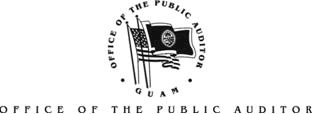
April 6, 2005
The Port Authority of Guam (Port) closed fiscal year 2004 with an increase in net assets of $1.9 million (net assets is the government accounting term for profit). This is the second year the Port reported a profit, which was a significant increase of 143% (from $774 thousand in FY 2003). Deloitte & Touche LLP conducted the audit.
Revenue tons of cargo decreased from 2.2 million tons in FY 2003 to 2.1 million in FY 2004. As a result, operating revenues decreased from $28.6 million to $26.2 million, or by $2.4 million. Despite the decline in revenue, the Port achieved a profit mainly due to aggressive cost-cutting measures of its operating expenses from $27.1 million in FY 2003 to $24.1 million in FY 2004, or by $3 million.
Nearly all categories of operating expenses declined, including personnel from 356 to 331. As a result of the Port’s personnel cutback of 25 employees, overtime increased to $701 thousand due to implementation of new security measures. Additionally, COLA and supplemental annuities almost doubled from $569 thousand to $910 thousand.
The Port continues to amass more cash, increasing its cash position from $10 million to $15.1 million. However, $8.3 million is restricted for typhoon and earthquake damage repairs. Construction work in progress also increased by 46% from $487 thousand to $908 thousand for electrical upgrades, installation of typhoon aluminum shutters, installation of a surveillance system, and an architectural and engineering plan for a new pier.
Overall, the Port’s financial condition continues to improve. The Port’s FY 2004 current ratio, which is an indication of its ability to pay its bills over the next 12 months, increased from 1.22 to 1.63 in FY 2004. This means that for every $1 debt, the Port has $1.63 to pay its debt.
During FY 2004, the Port initiated its privatization process with the selection of Mercator Transportation Group who has been contracted to prepare the Request for Proposal.
The Port’s report on compliance and internal controls had one finding pertaining to the lack of regular review of accounts receivable, in which $306,000 was recommended for write-off due to the Port’s lack of closure of long disputed accounts. In a separate letter to management, a finding identified certain key areas at the Port may be understaffed, which resulted in instances where employees charged overtime hours of 10 to 16 hours on a weekday 651 times during the year. The Port responded that excessive overtime was justified due to attrition, increased security and operational demands.
For further discussion, see the Management’s Discussion and Analysis.